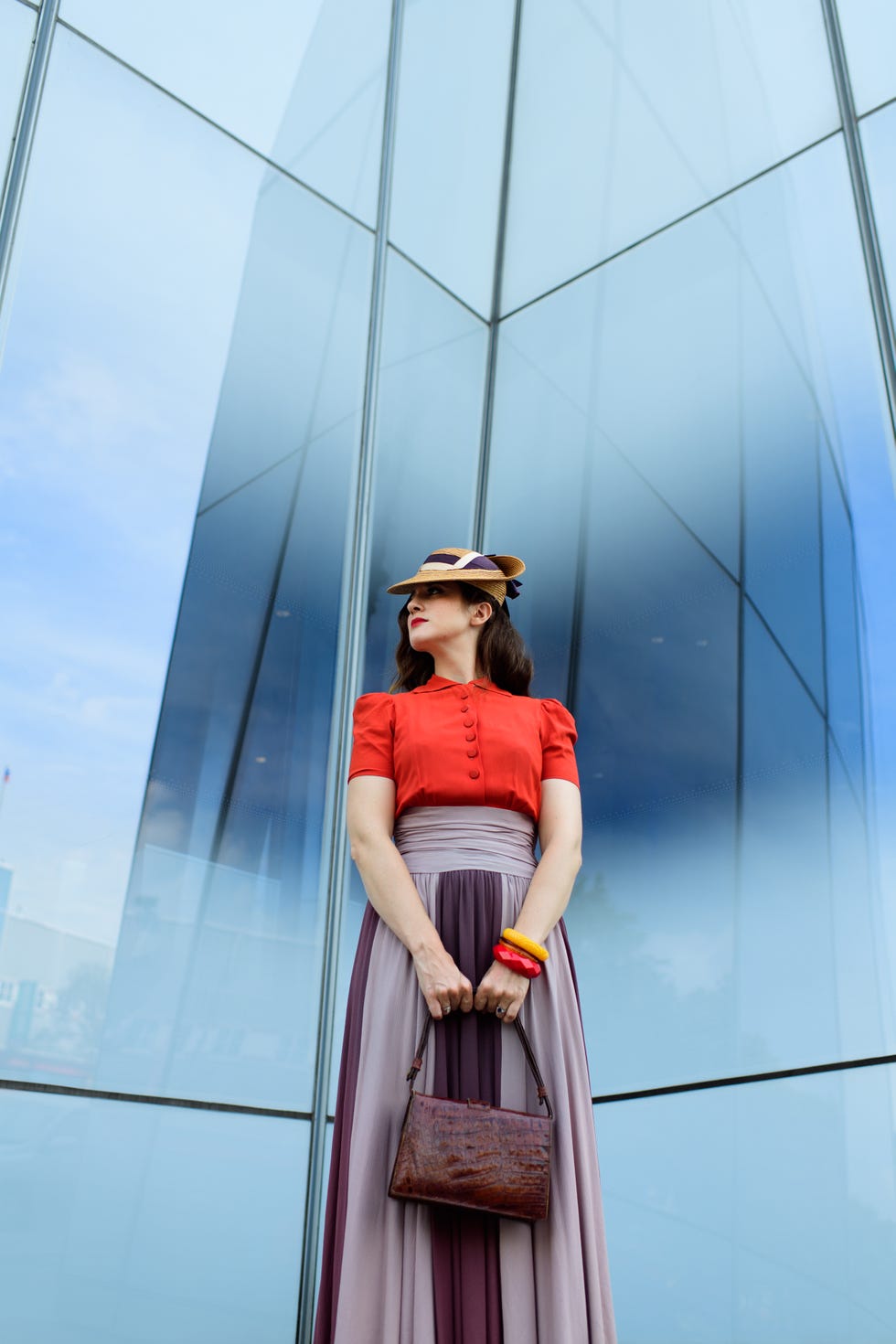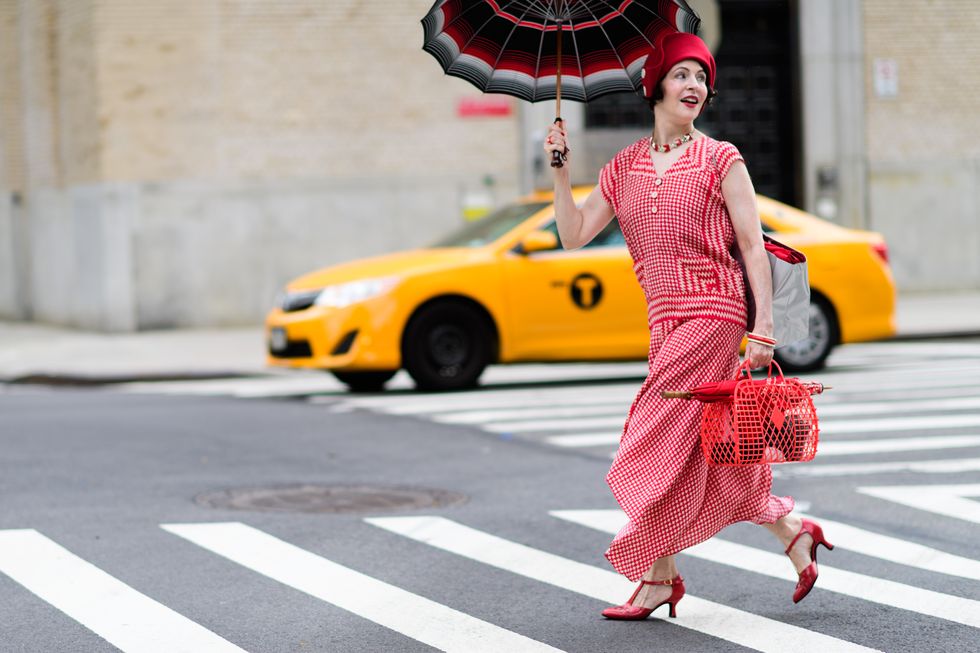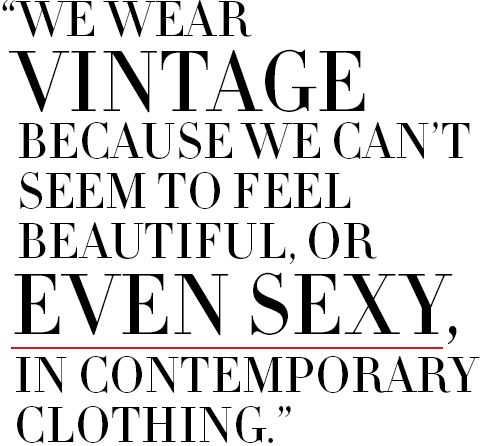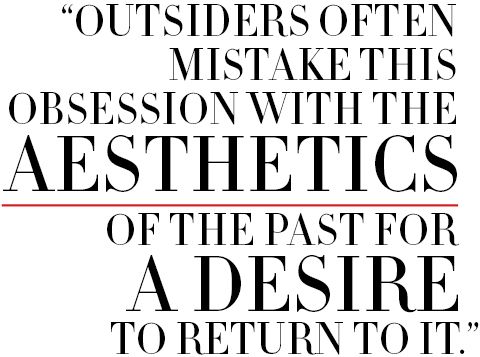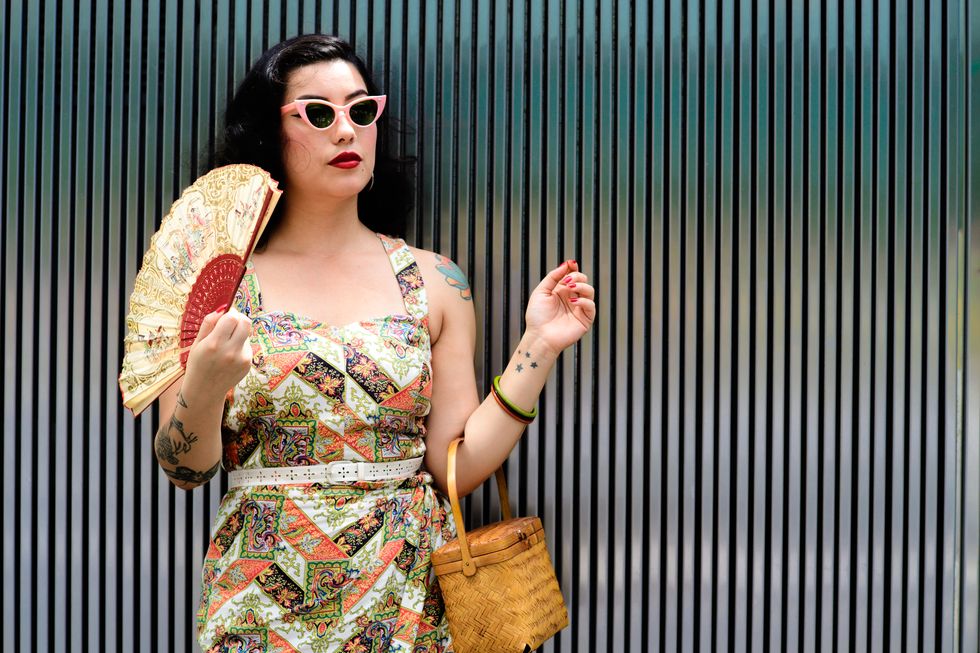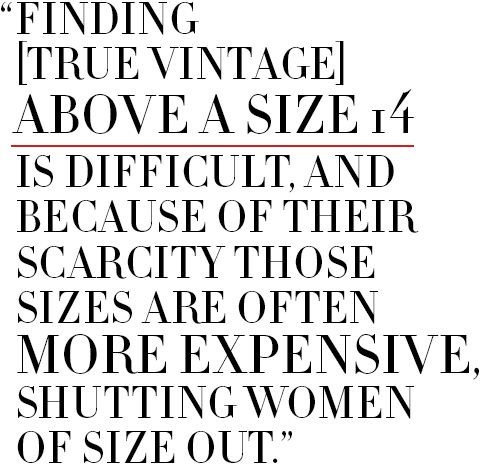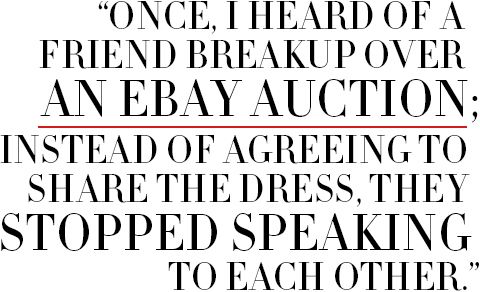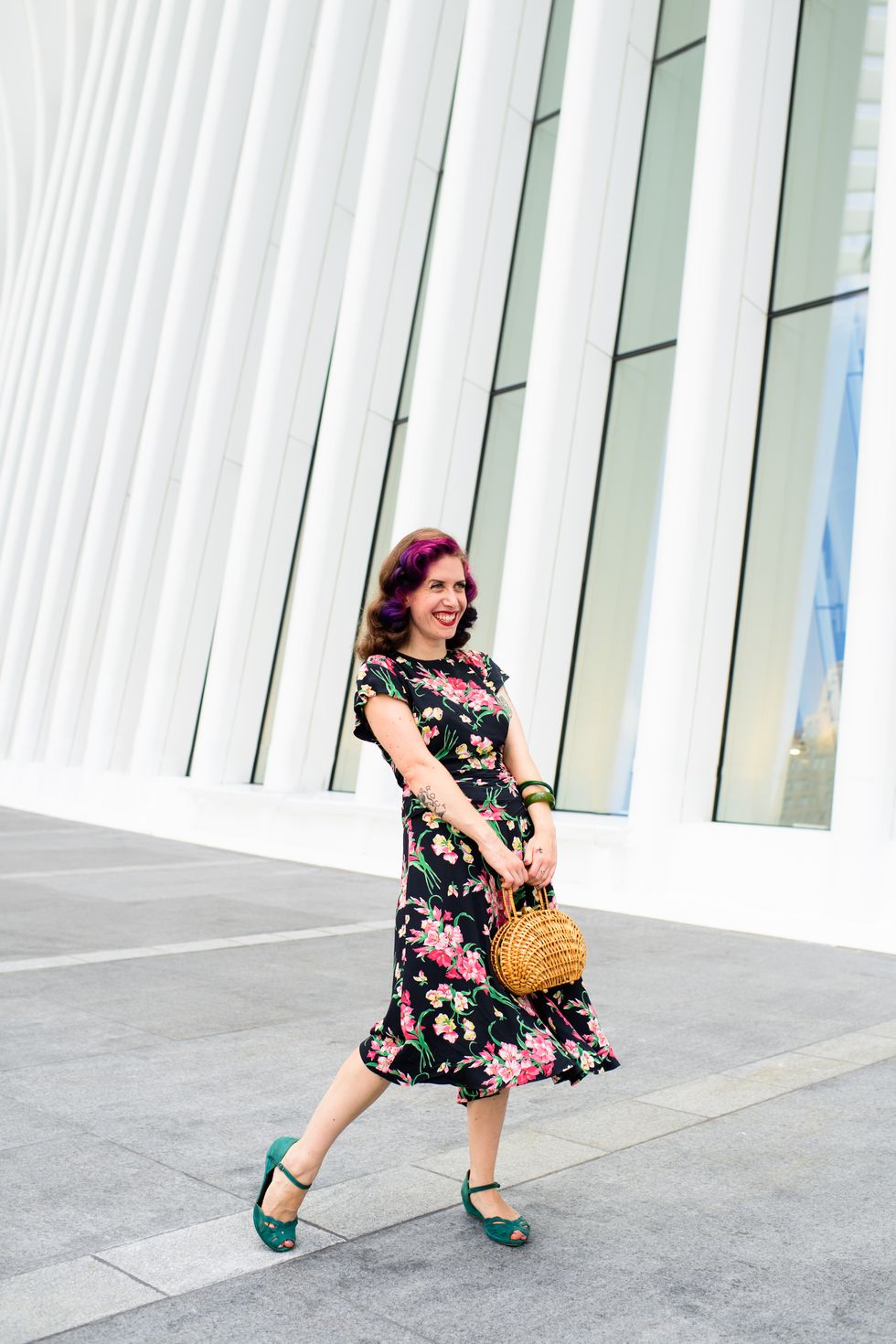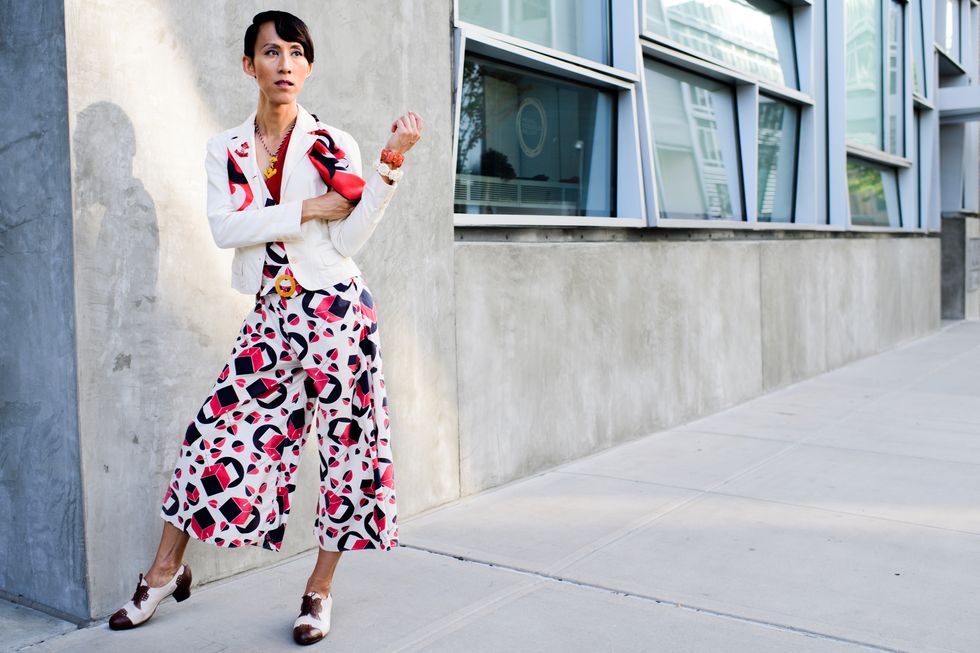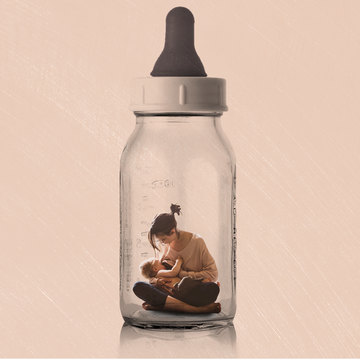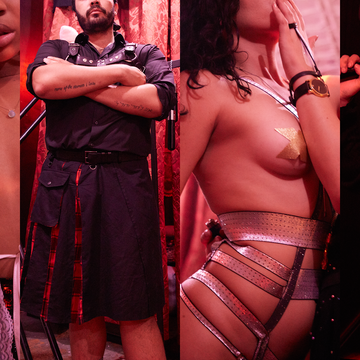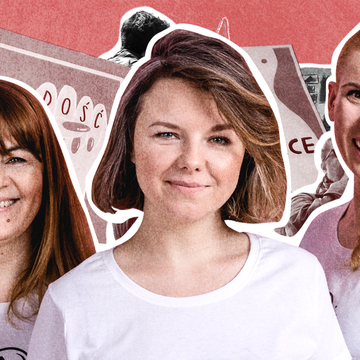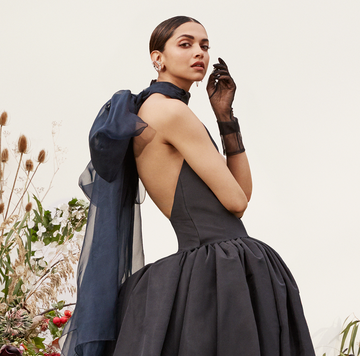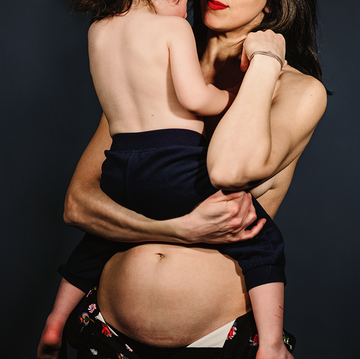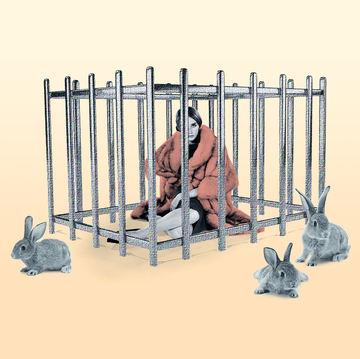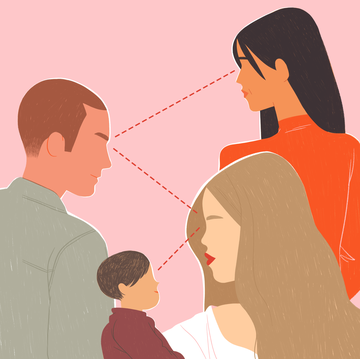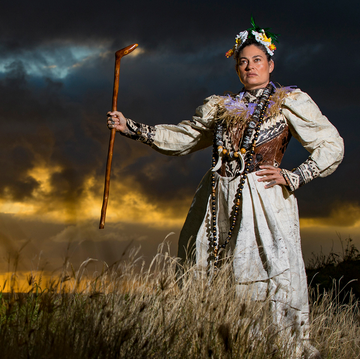Yes, they dress like this every day. And no, they're not in costume.
Whenever Gretchen Fenston leaves her house, people always ask her the same two questions, usually in the same order. First: "Are you in costume for something?" (She's not). Then, the skeptical follow-up, disbelief that what looks like a ton of work is a daily routine: "Do you always dress like this?"
Fenston has been dressing "like this"–wearing vintage clothing from the 1920s through the 1940s–since she was a teenager in San Francisco in the early 1970s. "As a young child I always wanted to be an 'old-fashioned girl' for Halloween," she says. "I lived in the real world, but I wanted to live in this romantic world of an earlier time." Since moving to New York in 1980, the fashion archivist has been part of a growing scene of vintage collectors who bring the past into the present in their daily dress. The effect is stunning and intimidating; to outsiders, it's impossible to imagine how a person can so thoroughly evoke the past without looking like they're in a costume.
Voon Chew used to be among the dazzled, but he started wearing vintage after spotting Fenston from afar at a Jazz Age party in 2008. He'd recently fallen in love with Lindy Hop, the form of swing dancing most vintage collectors know, and had gone to the party just to dance. He wore an Armani button-down and jeans. "And then I saw Gretchen and (her husband) Roddy. I was mystified, in awe of what they were wearing," he remembers. "They embodied the persona so beautifully. I looked down at my outfit and was so ashamed. I felt so boring!"
It's hard to imagine he ever felt embarrassed. Chew is now one of the best-dressed people, and the only one who effortlessly gender-bends, in the overwhelmingly stylish circle of vintage collectors that thrives in New York City, a constantly rotating cast of hobbyists whose closets end somewhere around the mid-1960s, if not earlier. They flock to old movie theaters and big-band concerts, a mass of hats, sweeping dresses, and tailored suits. When I moved here from San Francisco, I found them as quickly as I could, because like Chew, once I started wearing vintage, I never looked back.
Until I started collecting vintage personal style eluded me. Clothes never seemed to fit right; they were too small in the bust and overwhelmed my short stature. I liked patterns and textures but didn't wear them well. And despite liking dresses, I never wanted to look too feminine, convinced that it would make me appear even younger and smaller than I already did. When I bought a green silk 1950s wiggle dress at a vintage shop in my sophomore year of college, I didn't expect that, within three years, that's all I'd be wearing. But somehow I'm here, 40 dresses later, feeling the best I ever have.
This is a common story among my friends: You pick up a dress here, a blouse there, looking for more and more specific things as you discover gaps in your wardrobe. The cocktail dresses you liked before look too short, or too inelegant, and you feel the need to replace them with a sweeping rayon number from the 1940s. Even your PJs are as old as your mom. Suddenly, you've become a vintage person. "I don't really know how it happened, but one day I looked at my closet and realized, Huh, I guess this is what I wear now," says Vanessa Gualdron, a photographer who's been wearing vintage for about three years. "I didn't do it on purpose, but this is where I wound up."
Ask most vintage collectors to show you the first piece they ever bought, though, and chances are they don't own it anymore. You learn quickly that just because things are vintage doesn't mean they're good–or that they look good on you. The trick to looking put-together instead of tacky is applying the same guiding principles of style people use today: find something that fits you, feels right, and looks cohesive. We wear vintage because we can't seem to feel that way–comfortable, beautiful, even sexy–in contemporary clothing. "As you get older you find out what you love, and you commit to who you are," says Michelle Coursey, a makeup artist whose interest in vintage bloomed when she met her now-husband at New York's Jazz Age Lawn Party six years ago. "Vintage is what makes me the most comfortable, the most beautiful. It's hard to stand out, in New York especially, and in vintage I feel the best about myself – I take pride in having found a piece and wearing it."
Even once you've figured out what looks good on you, your closet is never finished. Anyone who loves fashion feels this way, but vintage has an urgency to it, because it's always disappearing: there's no more of these clothes we love so much being made, and the simple passage of time steadily disintegrates what's left. Shopping becomes a form of conservation, saving historical objects not just from the ravages of age but also from the clutches of fashionistas who see a long skirt and feel compelled to cut half of it off. This savior mentality excuses broadening our wardrobes well into the hundreds of pieces, which can, cumulatively, cost thousands of dollars. Everything from the fabric to the construction is superior to anything you could buy now, and with each passing year since the birthdate of a piece, that item gets more expensive.
But not everyone can collect this kind of "true vintage," as many call it. Finding things above a size 14 is difficult, and because of their scarcity those sizes are often more expensive, shutting women of size out. Vintage can also be hard to live in, particularly styles that predate the 1940s, when women's presence in the workforce encouraged daywear to become sturdier and less restrictive. And although vintage is less expensive than modern clothing of the same quality, "taking care of it is a part-time job," as Coursey jokes, a constant stream of hems to fix, zippers to replace, and underarm tears to patch. Understandably, not everyone wants to deal with it.
That's why, as more women flock to vintage fashion, companies that recreate old styles for contemporary shoppers have proliferated. What collectors refer to as "repro" is now a major part of the vintage community and beyond, distributed on Modcloth and elsewhere to those who like the idea of vintage but not the procurement of it. Some companies strive for authenticity, while others update vintage styles for modern tastes, using bolder colors and tighter tailoring. While most vintage collectors will wear repro on occasion, the majority think of it as a last resort—something only the less dedicated would slip on, rather than the real thing. Chew is a notable exception, actively seeking out ways to incorporate contemporary styles into his looks. "I like to be a bit anachronistic," he says. "I find that it's more exciting to bring in contemporary pieces and make it all come together in an interesting way."
Putting a personal spin on vintage is common, but it usually shows up in hair and makeup, which even fashion sticklers tend to treat with less rigidity than their outfits. Because some styles (plasticky '30s curls come to mind) are simply too absurd-looking to wear in the present day, we treat them as references rather than commandments, mixing decades to create a style that prioritizes polish over historical accuracy. This still requires learning the original techniques, though, many of which were lost along with the now-deceased stylists who created them. But in recent years, thanks to YouTube mostly, women across the world have revived and shared this dormant art. We teach ourselves to pin-curl our hair and sleep overnight in the clips, the next day brushing out perfect waves or sculpting them into complex structures. Many women take a similarly loose approach to makeup, the most obvious indication being near-universal winged eyeliner, which didn't actually emergeuntil the mid-1960s.
Outsiders often mistake this obsession with the aesthetics of the past for a desire to return to it. "People ask if I was 'born in the wrong era' and no, of course I wasn't!" Gualdron laughs. "It's important to know that it's just an outward façade; I wouldn't want to live back then. When people call me an 'old soul' it makes me cringe." Even the many white guys in this community are quick to acknowledge that even they are glad not to live in earlier decades. Coursey recalls the mornings of an annual vintage retreat at a cabin in upstate New York, where a dozen or so friends sat around the fireplace in our robes reading issues of Esquire and Harper's from the 1930s. "We couldn't stop talking about the clothes being beautiful but the politics being so horrible," she says. "People in this scene are very smart and well-informed. We can share this love of the style but be on the same page that living back then was awful in a lot of ways."
My favorite thing about wearing these clothes is that doing so writes a new chapter in this otherwise sad history: When these pieces were made, women couldn't open their own bank accounts, but 60 years later, I'm buying their clothes with a debit card that has my name on the front. I wore them to work when I was an audio engineer; Gualdron sometimes wears them onstage playing bass for her hardcore band, Electro Insides. "I love the duality of me wearing vintage," says Gualdron. "When I take the subway into work, I'll be decked out in a vintage outfit and listening to punk, and no one would ever guess it from the way I'm dressed."
There is very little we can't do in these clothes, but as progressive as they make some women feel, or as progressive as the politics appear to be, almost everyone in this scene is white, straight, and cisgender. Gualdron, who is Colombian and grew up in Queens, says her Latinx friends are always puzzled that event photos rarely include other people of color. "And I just don't have an answer," she says. "Every time I walk into a party or an event, I look around and I'm the only one, or one of very few. I'm not thinking about it constantly, but I do notice it, and I'm sort of mentally prepared for it." She's never been confronted with overt racism in the scene, but would still like more people to recognize that whiteness is the status-quo—and question why that is. "Especially since what we are celebrating comes from a cultural history that is no exclusively white."
Subtle gender dynamics emerge, too. Dressing well inspires an air of gentility, which creates a wonderfully sophisticated environment but also discourages breaking the spell with something like a complaint of inappropriate behavior. Men in this scene skew older, whereas the women start collecting in their teens, and it's not uncommon for the former take advantage of the disparity. Compliments can easily verge into uncomfortable territory, whether in their tone or their frequency, and the few times I've tried to address repeat offenders, I became the problem for taking the issue "too seriously" or not agreeing that someone was "just trying to be nice." It's also common for prominent men in the scene to focus their mentorship on younger men in skills like dressing, dancing, and photography; where we wind up with our own version of the professional mentorship gap: women are simply admired, appreciated, and bereft of influence.
And, like any tight-knit scene, there's regular old drama. The same air of gentility that smooths over micro-aggressions also suppresses factionalism, cattiness, and the occasional grudge. While Coursey says that "98 percent of the people in this scene are truly lovely," everyone in it has their own acquaintances who they prefer to avoid. Humblebrags about the size of one's vintage collection flow freely; less common, but worse, are asides to friends about someone else's weight, masked as a comment that whatever they're wearing doesn't fit them very well. Most irritating are the comments about how small one's own waist is, which serves not only as a compliment-fish but a boast about squeezing into coveted pieces even a contemporary size 4 would have trouble zipping up. Once, I heard of a friend breakup over an eBay auction; instead of agreeing to share the dress, they stopped speaking to each other.
These are rare occurrences, though, and hardly enough to discourage staying in the scene. The experience of going to see an old movie dressed in the same sorts of clothes you see onscreen is a satisfying one, as are the joyful smiles that spread across strangers' faces when they see us out in force. We create a bubble that exists alongside reality and get to see the same friendly faces every time we step inside. "I've never been in a vintage setting where I felt left out," Coursey says. "Before I met these people I always felt like an outsider, so being included is a huge deal to me."
Chew's experience has been similar, and even deeper. "In the vintage and dance communities I feel like I can thrive," he says. "People are supportive of my gender bending. That's the only time I feel comfortable being more daring in the way I dress." It's particularly vital for him because his family doesn't support his interest in style, let alone his fluidity. "It's a shame, because it's so much a part of me, but the tension isn't worth it. I'm better off being myself around people who understand me."
If there's one common lament among everyone who wears vintage, it's that too many people think they can't do it, too. But there are no prerequisites, other than an interest in old, beautiful things. "It draws people together from this sincere love for things [other] people think are unimportant," Fenston says. "I feel like in the U.S. we're taught that if something looks good it's not functional, or that if you're paying too much attention to detail you're wasting time, and I just don't think that at all." Fenston has sewed since childhood and Coursey works Fashion Week every year, which aren't surprising backgrounds for this hobby, but Gualdron and I came from the punk and indie scenes, neither of which are places you'd expect to find someone in a 75-year-old-dress. Chew works in a law firm and, as is the case with most of us, sometimes goes for jeans and a T-shirt. But that's rare; once you start feeling this good about going outside for the day, it's harder to give it up. Dita von Teese isn't the only one who looks great even when she's grocery shopping.
Sometimes, when people who stop us on the street are particularly curious, we'll share some tips. When Coursey is out with her husband, teenage girls often run up to her to shower her with longing praise. She wishes she'd started collecting earlier in life and doesn't want them to lose the same opportunity. "They tell me they think this is a beautiful way of dressing, and I always tell them that they can absolutely do it," she says. "It's not as hard as you think. You don't have to wear platforms and bandage dresses if you would rather wear this."

